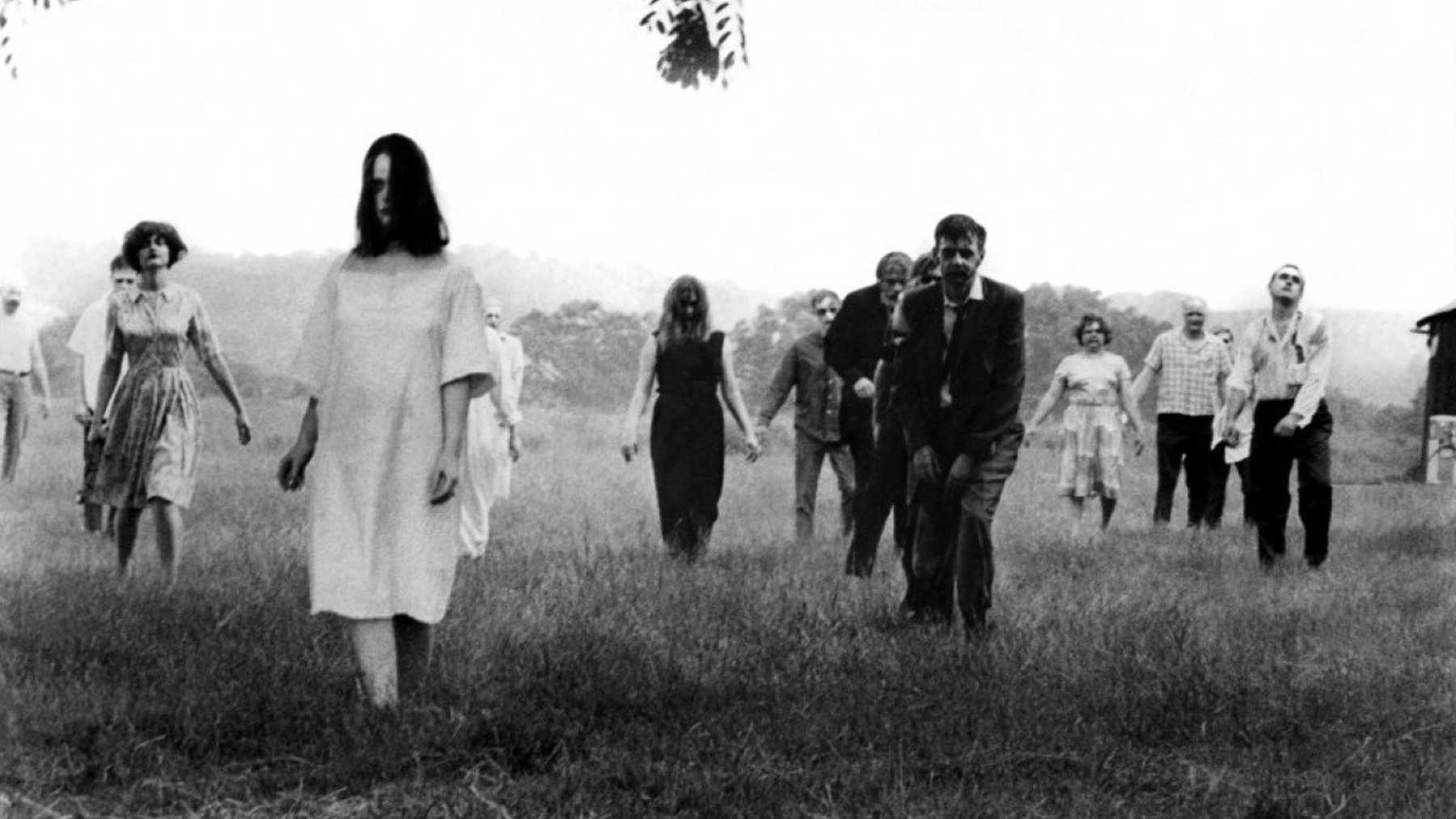The Shining is unarguably an aesthetically brilliant film. As in any Stanley Kubrick film, the mise-en-scène is painstakingly curated to create a unique experience for the viewer, a surreal cinematic space all its own. The maze-like architecture of the hotel, in parallel with the literal maze outside of it, contributes to the film’s nightmarish atmosphere. The cinematography is complex and singularly intense. Of all the films we’ve watched so far, The Shining relies the most on visual and sonic strangeness and disturbance (including the music) to generate the unease–and the gradual descent into madness–that precedes the violent chase. This is a film of images so memorably disturbing that they’ve become forever entwined in cultural consciousness. The film is the source of many allusions and parodies in subsequent films and television shows. For example, a friend of mine has never seen this film, but has somehow seen every iconic scene out of order. The Shining is also frequently cat-memed, for some reason:



The Shining is also unarguably a politically complicated film, perhaps more so than any film we’ve watched thus far. The film hosts an extreme amount of misogyny and racism (most of which comes directly from the Stephen King book on which it is based, but not all). Some moments of racism and misogyny feel like deliberate critique, while other moments feel less self-aware. It is clear, for example, that the conversation between Grady and Jack in the bathroom is meant to highlight both their characters as misogynistic and racist white men, invested in their station in the social hierarchy (whether the use of the N-word in that scene was necessary to establish that fact is another matter). Jack’s use of “White Man’s Burden” in the bar scene is another example of this attempt at such characterization. Jack is the epitome of “toxic masculinity.” The hotel does not create this quality in him; it only exacerbates it.
Other racist and misogynistic elements of the film are murkier in tone and “intent.” For example, we learn that the Overlook Hotel is built on an “Indian burial ground,” which is implied to contribute to its hauntedness. You may also remember this plot point from other horror films of the late 70s and 80s: Poltergeist (1982), The Amityville Horror (1979), and Pet Sematary (also based on a book by Stephen King, 1989). There are multiple ways to “read” this trope, highlighting the complicatedness of such sociopolitical intersections. In 1987, for example, a reviewer made the case that The Shining is primarily about the genocide of indigenous populations in the US. But there is also something fetishizing and “othering” about the concept, as well as erasing.
Another racially problematic element of The Shining is the character of Dick Halloran, who is a somewhat subverted version of the “Mystical Negro” trope (he has more agency than is typical of this type of character, for one, and Danny also shares his mystical “power,” but nonetheless the single black character in the film exists as a plot device rather than a fully fleshed person). Stephen King tends to write this kind of black character into his books, unfortunately, but it was Kubrick’s decision to kill him, which results in a black character who basically exists solely to die gruesomely to save the white characters. Here is a good article exploring the problems with his character more deeply than I have done here.
And lastly, of course, there is Wendy. Wendy is a very different female character than Ripley, or even Laurie. In the era of masculinized Final Girls, she has been criticized for being too weak, naïve, stupid, useless. The Wendy in Stephen King’s book is more resourceful and capable, as well as more conventionally “beautiful.” To be fair to film-Wendy, she does almost save the day by taking action; her plan only fails because she didn’t account for ghosts. Still, she has less agency than most of the women we’ve encountered in horror films so far. To put it bluntly, she “takes shit,” in that she doesn’t stand up for herself. She acts like an abuse victim—which she is—who has learned to walk on eggshells and rationalize her husband’s violent behaviors. I find Wendy to be stronger and more resourceful than many give her credit for, personally, but it is easy to argue that her characterization is misogynistic.
This argument is to easy to make in part because Wendy is hyperbolically feminine and Jack is hyperbolically masculine, which together enacts a terrifying rendition of the “traditional” heteronormative family critiqued in other ways through many other horror films (e.g. Halloween’s suburban family nightmare). Katie Modal offers a fascinating study of Wendy’s femininity and Jack’s masculinity in “Gender Hyperbole and the Uncanny in the Horror Film,” arguing that “Instances of gender hyperbole in the horror film hence awaken in us a sense of cinema’s particular strangeness as a mimetic medium dealing in shadows or doubles of the beings and things around us in the world.” She contrasts the “gender hyperbole” of The Shining with “gender slippage” characteristic of the slasher. I’m very curious about your reaction to this essay after viewing the film.


